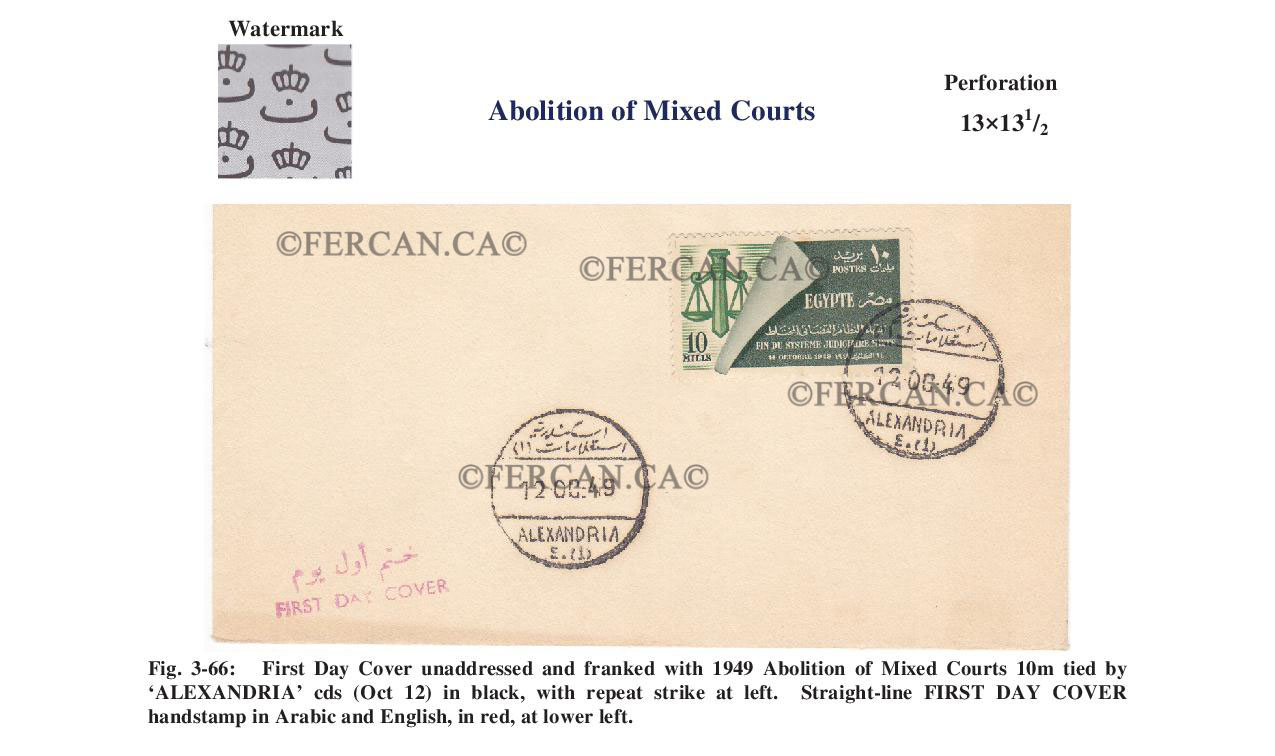14 October 1949 - Abolition of Mixed Courts. Photogravure by the Survey Department, Cairo. Usage Valid until 19th February 1950.
The existence of mixed courts confirmed foreign influence in Egypt. Before the emergence of such courts in 1876, the foreign consulates, instead of civil courts, were authorized to look into cases where one of the parties was a citizen of their country. If there was a litigation case between an Egyptian and a foreigner, that case went to the foreigner’s state consulate. The adjudications were not carried out only in the presence of the Consul, who was usually not in attendance if the judgment came in favor of the Egyptian. At the same time, the commercial cases were heard by commercial courts or traders’ councils formed of Egyptians and foreigners. The number of foreign residents increased in tandem with the increase in foreign influence in Egypt.
In 1876, Khedive Ismail tried to fix this flaw. However, instead of making the civil courts an alternative to consular and commercial courts, he reached an agreement with the European countries to establish mixed courts that were dominated by foreign judges and governed by French, English and Italian laws. The courts were to judge in citizen-foreigner disputes and be concerned with felonies, misdemeanors and civil and commercial disputes. Some misdemeanors and felonies committed by foreigners were excluded and remained within the jurisdiction of consular courts. The Dutch judge, van Pullman, remarked, "The mixed courts are a strong pillar of European control over Egypt." The mixed courts continued working until they were canceled on 14th October 1949, after the Montreux Convention stipulated that mixed courts be abolished after twelve years of the convention date

